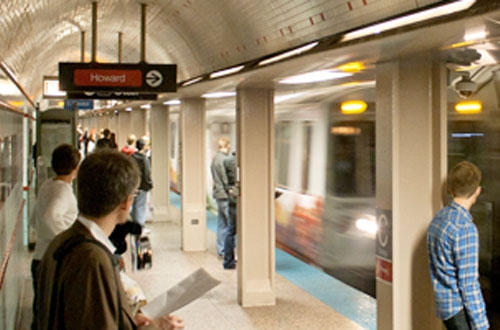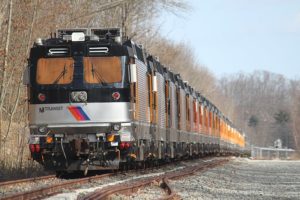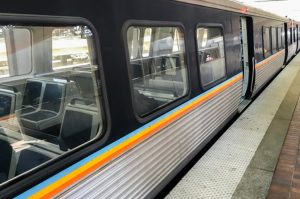Public transit deemed safest way to commute
Written by Kyra Senese, Managing Editor
The American Public Transportation Association (APTA) released a study this week that reveals a 90 percent drop in safety risks for those who commute using public transportation rather than driving.
Entitled The Hidden Traffic Safety Solution: Public Transportation, the study was prepared by the Victoria Transport Policy Institute for APTA. It states that communities with accessible public transportation experience about 20 percent of the per-capita traffic-related deaths and injuries as automobile-focused communities.
“It is time we employ public transit as a traffic safety tool because it can dramatically reduce the crash risk for individuals as well as a community,” said APTA Acting CEO and President Richard White. “While no mode of travel is risk free, the safety of public transit is striking when observing the number of fatalities that are a result of auto crashes.”
The Hidden Traffic Safety Solution: Public Transportation results were gathered through an analysis of public health, public transit and traffic safety data. The study’s authors say using public transportation reduces a community’s risk of accidents by half even for those individuals who choose to drive.
Bella Dinh-Zarr, vice chair of the National Transportation Safety Board, said she agrees public transportation can help keep high-risk groups out of the driver’s seat.
“Distracted driving can be prevented if we commute by bus or train when we want to multi-task,” she said. “People can use public transit and ride sharing to separate drinking from driving—making interventions such as .05 BAC laws even more practical so our roads are safer for everyone.”
Jeffrey Knueppel, general manager of the Southeastern Pennsylvania Transportation Authority (SEPTA), said SEPTA’s investments to complete $5 billion in capital repairs are “about more than state of good repair.”
“As this APTA report highlights, infrastructure investments that make public transportation more reliable and accessible have significant safety benefits across the multimodal transportation network,” Knueppel said. “Transit is safer than driving, and in Greater Philadelphia, these benefits will grow as system improvements encourage continued ridership growth.”
Data recently released by the U.S. Department of Transportation revealed that in 2015 there were more than 35,000 deaths resulting from auto accidents—an increase of 7.2 percent from 2014 and the largest rise in such accidents since 1966.
APTA officials acknowledged that all methods of transportation entail some risks, but they say the number of deaths related to public transportation is small compared to the thousands of deaths resulting from roadway accidents on a yearly basis.
“We must address expanding public transit with urgency and ensure the reliability and safety of these systems,” White said. “Nationwide, there is an $86 billion backlog of state of good repair needs for the nation’s public transit systems. Addressing this backlog is directly tied to maintaining the safest public transit network possible.”
Initiatives meant to reduce high-risk driving factors, such as graduated licenses for teens, impaired and distracted driving campaigns and senior driving tests are more effective when implemented in tandem with public transportation enhancements, according to the study.
White says the study makes it apparent that investing in public transportation and related policies saves lives and reduces rates of injuries.
“The community-wide crash reductions, as a result from decreasing auto travel and safer speeds, multiply as areas become stronger transit-oriented communities,” White said.





